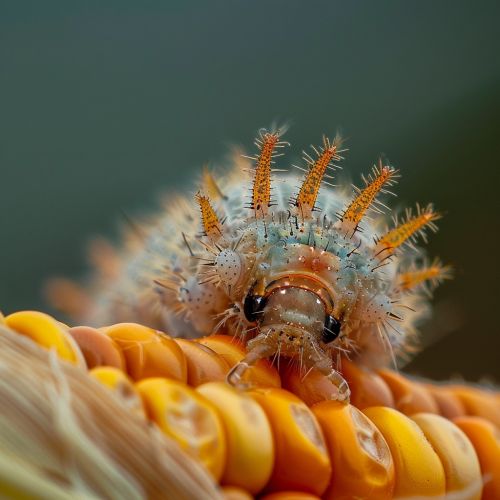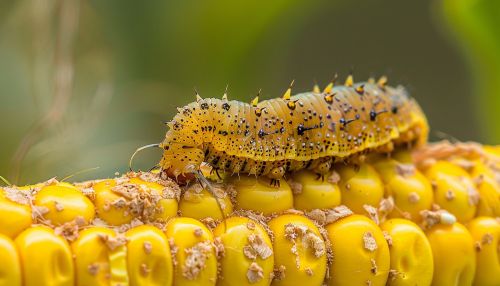Corn earworm
Introduction
The Corn Earworm (Helicoverpa zea), also known as the tomato fruitworm or cotton bollworm, is a species of moth in the family Noctuidae. It is a significant agricultural pest, particularly known for its impact on corn (maize) crops, but also affecting a wide range of other plants.


Description
The adult corn earworm moth is typically 1.5 inches in wingspan, with a robust body. The forewings are usually yellowish-brown to dark brown, with a noticeable dark spot in the center. The hindwings are lighter in color, often with a broad dark band along the outer margin. The larvae, which are the primary agricultural pests, are highly variable in color, ranging from light green to nearly black, often with alternating light and dark stripes running lengthwise down the body.
Life Cycle
The life cycle of the corn earworm is complex, involving several stages: egg, larva, pupa, and adult. The female moth lays her eggs singly on the silks of corn or other host plants. The eggs hatch into larvae, which feed on the host plant, burrowing into the fruit or kernels. After several weeks of feeding and growth, the larvae drop to the ground and pupate in the soil. After a period of pupation, the adult moths emerge and the cycle begins anew.
Distribution and Habitat
The corn earworm is widely distributed across the Americas, from Canada to Argentina. It is particularly prevalent in the southern United States, where it can complete several generations per year due to the warm climate. The species is highly adaptable and can be found in a variety of habitats, including agricultural fields, gardens, and wildlands.
Economic Impact
The corn earworm is one of the most economically significant pests in North America, causing substantial damage to a wide range of crops. While corn is the most commonly affected crop, the pest also attacks tomatoes, cotton, soybeans, and many other plants. The larvae feed on the fruit or kernels of these plants, reducing yield and quality. In addition to direct crop damage, the corn earworm can also increase the risk of fungal and bacterial infections in affected plants.
Management and Control
Control of the corn earworm primarily involves integrated pest management strategies, including crop rotation, use of resistant varieties, and targeted application of insecticides. Biological control methods, such as the use of natural predators and parasitoids, can also be effective. In recent years, genetically modified crops expressing toxins from the bacterium Bacillus thuringiensis (Bt) have been widely adopted for corn earworm control.
